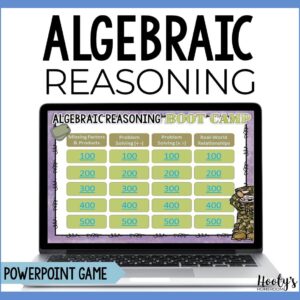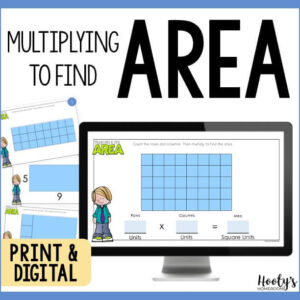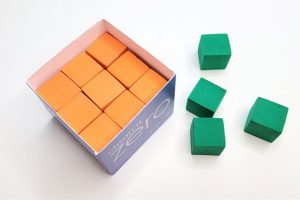Teaching multiplication on a number line is an effective way to help students grasp multiplication concepts. It’s simple, visual, and helps students truly understand the concepts of repeated addition, equal groups, and skip counting. However, some teachers might feel uneasy about using number lines, especially if they haven’t used them much before or worry about students grasping the concept. Despite these concerns, using multiplication on a number line is beneficial for building a strong foundation in math.
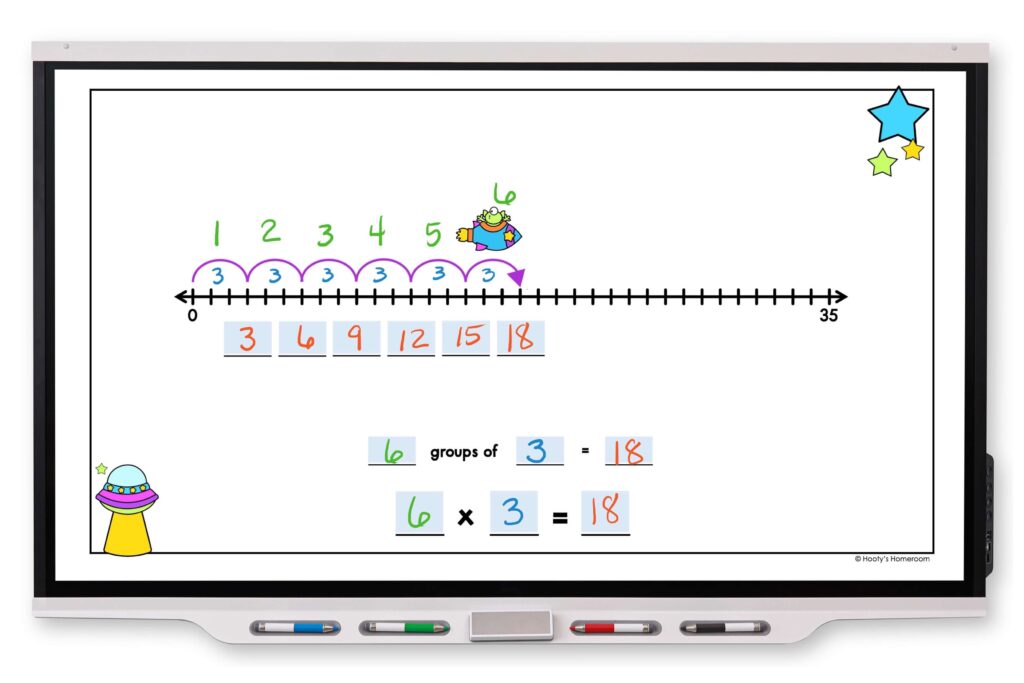
Visual Representation of Multiplication on a Number Line
One of the biggest challenges in teaching multiplication is helping students understand it as more than just an abstract concept. Using multiplication on a number line makes multiplication tangible by using a visual representation. Visual aids help students see that multiplication involves groups of numbers, not just random calculations. Multiplication on a number line turns something abstract into something students can see and count.
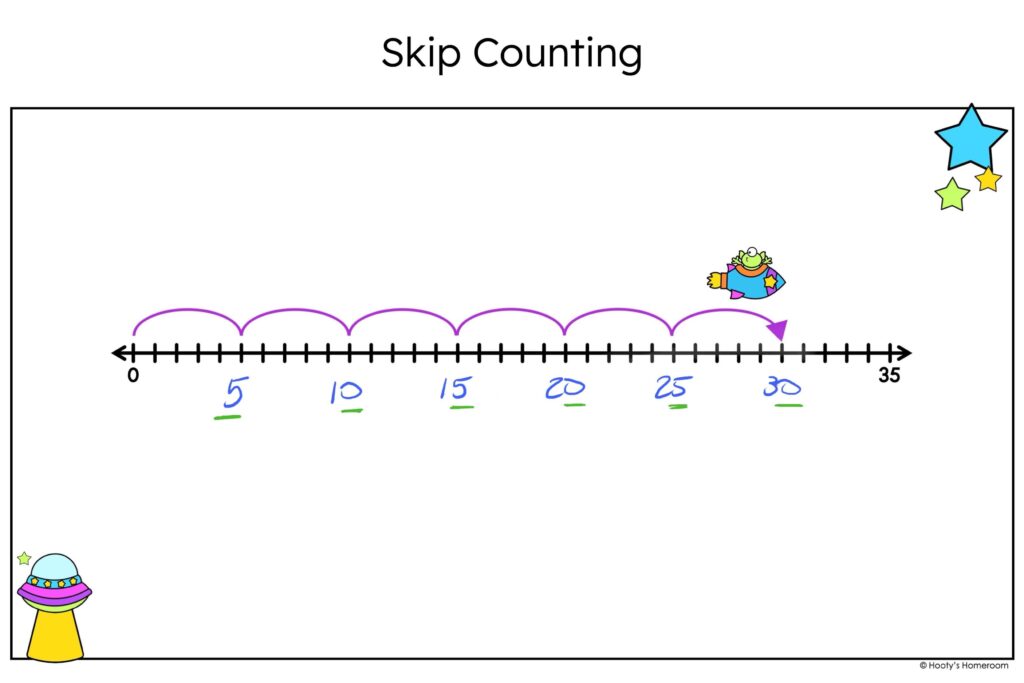
Recognizing Patterns and Skip Counting
Patterns are a key part of understanding multiplication, and multiplication on a number line is a great way to help students see these patterns in action. By skip counting on the number line—whether by 2s, 5s, or 10s—students start to notice patterns and relationships between numbers. For example, when they skip count by 2s, they can see that every second number is a multiple of 2. When they skip count by 5s, they will notice that every multiple of 5 ends with 0 or 5. Using number lines will reinforce your students’ number sense and make it easier for them to grasp the concept of multiplication.
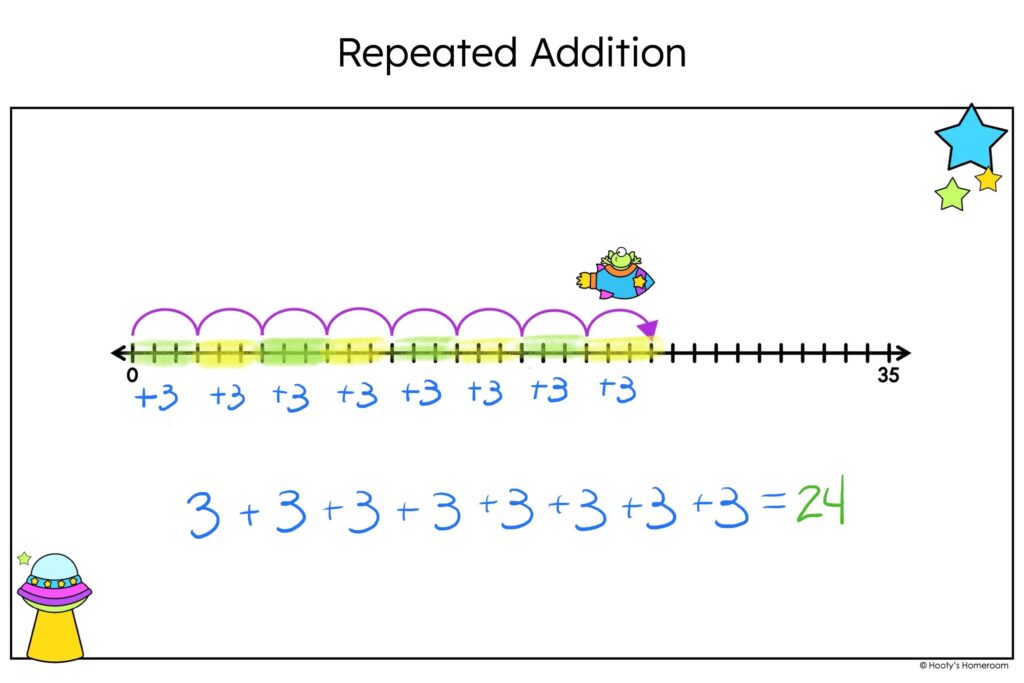
Connecting Multiplication on a Number Line to Repeated Addition
Another great thing about multiplication on a number line is how it connects multiplication to addition, a concept that students are already familiar with. On the number line, multiplication can be shown as a quicker way to add the same number multiple times. For instance, if students know that 3 + 3 + 3 + 3 + 3 + 3 + 3 + 3 equals 24, they can see on the number line that this is the same as 8 x 3. This connection helps make multiplication feel less intimidating because it builds on what they already know.

Understanding Equal Groups on a Number Line
Multiplication is often described as creating equal groups, and multiplication on a number line is perfect for showing this concept in action. By marking out equal groups on the number line, students can see how multiplication works with a pictorial model. For example, if you’re teaching 8 x 4, you can show them 8 groups of 4 on the number line. This helps them understand that multiplication is about grouping and counting those groups, which is key to building a solid understanding of the concept.
Overcoming Hesitation in Using Number Lines
It’s understandable that some teachers might feel hesitant about teaching multiplication on a number line, especially if it’s not a tool they’ve used often. However, it’s important to recognize that multiplication on a number line offers another visual that helps students build number sense.
Teaching Multiplication With Number Lines
Teaching multiplication on a number line is a powerful way to help students understand the concept on a deeper level. It’s not just about memorizing facts; it’s about understanding the “why” behind it. By giving students a variety of visual models to explore multiplication, you’re helping them build a strong foundation in math that will serve them well in the years to come.
Looking for low-prep activities for teaching multiplication concepts? Check out these beginner multiplication activities.









